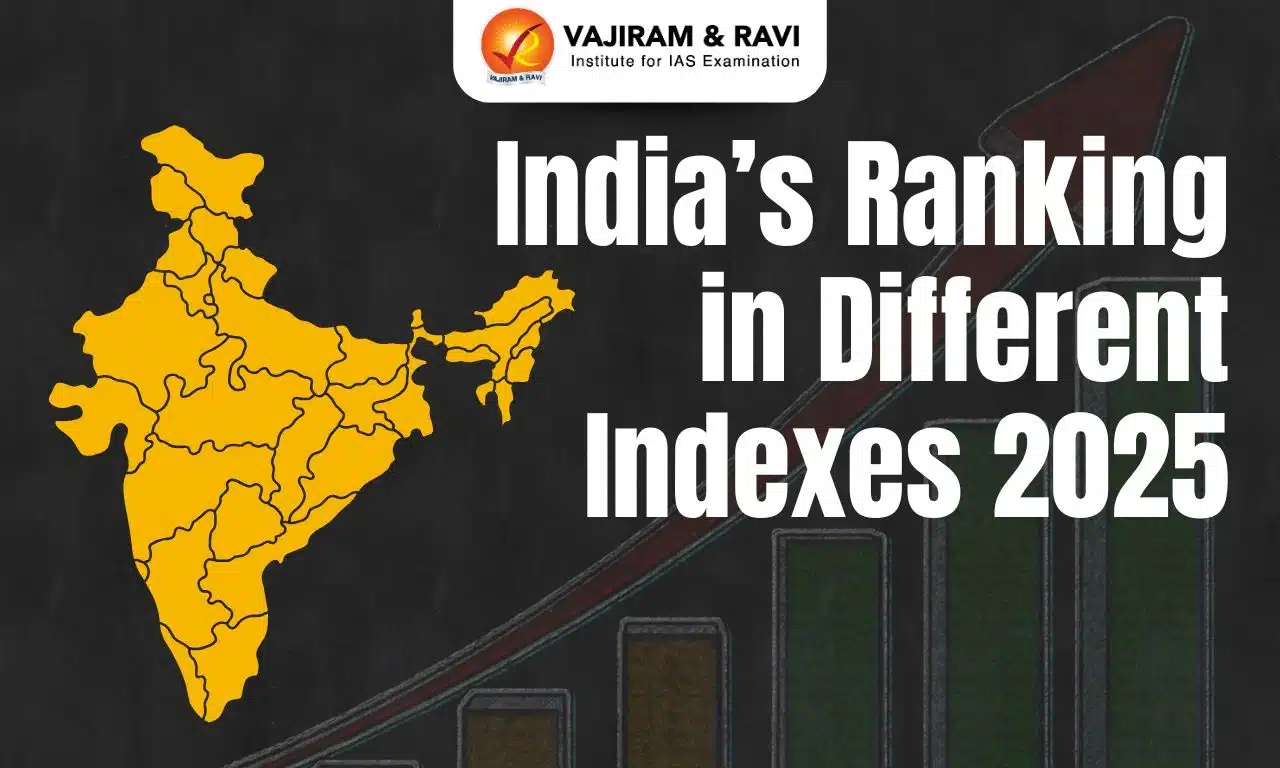Indian economy is broadly classified into primary, secondary, and tertiary sectors, each playing a vital role in the nation’s economic development. The primary sector includes agriculture and allied activities, while the secondary sector covers manufacturing and industries. The tertiary sector comprises services like banking, education, and healthcare.
These primary, secondary and tertiary sectors of the Indian economy are interdependent and collectively drive employment, GDP growth, and infrastructural development, making them essential for India’s inclusive and sustainable economic progress. India’s economy is shifting from conventional industries to knowledge-driven sectors, driven by the accelerating pace of technological innovation and the expanding influence of globalisation.
Sectors of Indian Economy
Sectors of Indian economy are categorised into three primary divisions: the primary, secondary, and tertiary sectors. Each sector plays a pivotal role in shaping the nation's economic landscape, and is crucial for Sustainable Development.
- Primary Sector: The primary sector involves the extraction and production of natural resources, including agriculture, forestry, fishing, and mining, and remains crucial for rural employment despite its declining share in GDP, currently around 16-17%.
- With the rise of the Blue Economy, especially in marine and fisheries development, this sector is being reimagined for sustainable resource use.
- Secondary Sector: The secondary sector encompasses manufacturing, construction, and industries that transform raw materials from the primary sector into finished goods, contributing about 28-30% to India’s GDP and supporting urbanisation and infrastructure growth.
- Initiatives promoting Green Economy principles are pushing this sector towards cleaner production, renewable energy use, and emission reduction.
- Tertiary Sector: The tertiary sector, or service sector, includes banking, education, healthcare, IT, transport, and tourism, and has emerged as the largest contributor to the economy, accounting for nearly 55-60% of GDP.
- Integration of the Digital Economy, especially through platforms and fintech, has amplified growth and innovation in this sector.
- In addition to these, the quaternary sector (knowledge-based activities like research and information and communication technology) and quinary sector (high-level decision-making roles in government and NGOs) are gaining importance in the modern economy.
- Evolution of Indian Economy: Over the decades, India has witnessed a significant shift from agriculture to industry and services, reflecting modernisation and urbanisation.
- However, challenges such as high unemployment rates, skill gaps, and infrastructure deficits remain. The balanced growth of all sectors, integration of technology, and sustainable practices are vital for India’s future economic progress.
Primary Sector of Indian Economy
The primary sector includes businesses that extract and harvest natural resources from the Earth. Primary sector companies typically engage in economic activity that makes use of the Earth's natural resources, which are then sold to consumers or commercial businesses.
- Primary Sector Role: The primary sector is foundational to India's rural economy, involving industries that process and package raw materials.
- Key activities include mining, fishing, quarrying, agriculture, forestry, and hunting, which are essential for basic economic functions.
- An example of the primary sector is agriculture, where farmers cultivate crops like rice, wheat, and vegetables directly from natural resources.
- Emerging vs. Developed Economies: Emerging economies, like India, have a higher concentration of employment in the primary sector. In contrast, developed countries use advanced machinery and technology, reducing manual labour in primary sector activities.
- Contribution of Primary sector to GDP: In FY 2024-25, the primary sector contributed 19.7% to India's Nominal GDP, with a growth rate of 4.4% in real GVA compared to the previous year.
- Workforce Dependency: Despite contributing less to GDP, the primary sector remains a major source of employment, engaging over 40% of India’s total workforce. This highlights the sector’s role in providing livelihoods, especially in rural areas.
Secondary Sector of Indian Economy
The secondary sector encompasses activities in which natural products are transformed into new forms through methods of manufacturing commonly associated with industrial activity.
- Role: It is the next stage after the primary sector. The product cannot be produced by nature and must be manufactured, so some manufacturing process is required.
- An example of the secondary sector is a manufacturing plant that produces automobiles by transforming raw materials like steel and rubber into finished cars.
- Activity Included: The secondary sector includes the following business activities: automobile production, textiles, chemical engineering, aerospace, shipbuilding, and energy utilities.
- Contribution of secondary sector to GDP: The secondary sector contributed 25.3% to India's Nominal GDP in FY 2024-25 (PE), with a year-on-year growth rate of 6.1% in real GVA.
Tertiary Sector of Indian Economy
The tertiary sector, also known as the service sector, is the largest and fastest-growing sector of the Indian economy.
- Tertiary Activities: Tertiary activities involve both production and exchange. The production process includes the 'provision' of services that are 'consumed'. Wages and salaries serve as an indirect measure of output.
- Exchange refers to trade, transportation, and communication facilities that are used to overcome distance.
- Service-Based Output: Tertiary activities involve the commercial output of services rather than the production of tangible goods. They do not directly participate in the processing of physical raw materials.
- Examples: Common examples include the jobs of a plumber, electrician, technician, launderer, barber, shopkeeper, driver, cashier, teacher, doctor, lawyer, and publisher.
- Tertiary vs. Secondary Activities: The main difference is that tertiary services rely more on specialized skills, experience, and knowledge, while secondary activities focus on production techniques, machinery, and factory processes.
- Tertiary Sector Contribution to GDP: The tertiary sector contributed 55% to India's Nominal GDP in FY 2024-25 (PE), with a year-on-year growth rate of 7.2% in real GVA, indicating its continued dominant role in the economy despite a slight slowdown.
Quaternary Sector
The quaternary sector includes companies that engage in intellectual activities and pursuits. Intellectual services, technological advancements like Artificial Intelligence and innovation are common in the quaternary sector.
- Research and Development: This sector includes research and development that leads to process improvements, such as in manufacturing.
- Evolution from Tertiary Sector: Companies and firms in the quaternary sector were traditionally part of the tertiary sector. However, as the knowledge-based economy expanded and technology advanced, a new sector emerged.
- Role of IT and innovation: Firms in the quaternary sector use information and technology to innovate and improve processes and services, resulting in increased economic development.
- Key Activities: Firms within the quaternary sector might be engaged in the following business activities: Research and development, Information technology (IT), Education and Consulting services.
Quinary Sector
The quinary sector in India represents the highest level of decision-making and includes top-level executives, government officials, policymakers, and leaders in sectors such as education, healthcare, research, and culture.
- Role: This sector focuses on services that involve creating, interpreting, and managing knowledge, as well as directing large organisations and institutions. In India, the quinary sector plays a crucial role in shaping economic policies, driving innovation, and promoting social development.
- With the country’s growing emphasis on the knowledge economy and digital transformation, the importance of this sector is rapidly increasing.
- Key contributors include university leaders, senior government administrators, scientists, and senior managers who influence national and global decision-making processes.
- Increasing Importance: As India progresses in technology and economic development, the quinary sector will play a crucial role in driving growth, particularly with the rapid expansion of the digital economy.
Other Sectors in India’s Economy
Apart from the primary, secondary, and tertiary sectors, India’s economy can also be classified based on work conditions and asset ownership, providing a comprehensive understanding of the diverse structure of India’s economy.
Based on Work Conditions: Organised and Unorganised Sector
The organised sector includes formal, regulated industries that comply with labour laws, maintain proper records, and provide regular salaries and social security benefits. Examples are government offices, public sector undertakings, and large private corporations.
In contrast, the unorganised sector comprises informal activities, often lacking job security, stable income, and legal protections. Workers here generally experience irregular employment and limited access to social benefits, yet this sector contributes significantly to national income.
Based on Asset Ownership Public and Private Sector
The public sector consists of enterprises owned and managed by the government, such as Indian Railways, defence services, and public banks. These entities aim to provide essential services rather than focus solely on profit.
The private sector, on the other hand, is made up of businesses owned by individuals or groups, ranging from small enterprises to multinational corporations, and operates mainly for profit generation and innovation.
India’s Shift from Primary to Service Sector
India’s economic structure has witnessed a remarkable shift from the primary sector, dominated by agriculture, directly to the service sector, bypassing the typical intermediate industrial phase.
- In the 1970s, agriculture contributed around 40% to the Gross Value Added (GVA), but by 2024, its share had fallen to less than a fifth, while services now account for about 55% of the economy.
- According to the Economic Survey 2024-25, the service sector's contribution to India's Gross Value Added (GVA) increased from 50.6% in FY14 to 55.3% in FY25, growing at an average rate of 8.3% between FY23 and FY25.
- This transformation is driven by several factors: advancements in technology, the rise of IT and outsourcing, a large English-speaking workforce, and favourable government policies.
- The services sector, including IT, finance, healthcare, and tourism, has become the key growth engine, generating millions of jobs, boosting exports, and attracting foreign investment.
- However, the transition has not been uniform across the population. While urban areas benefit from high-productivity, better-paying service jobs, a significant portion of the rural population still depends on agriculture, leading to underemployment and regional disparities.
- The manufacturing sector’s slow growth, due to regulatory hurdles and infrastructural challenges, has limited its ability to absorb surplus agricultural labour.
- Despite these challenges, the expansion of the service sector has improved national income, living standards, and global economic integration, making it a defining feature of India’s modern economic landscape.
Sectors of Indian Economy UPSC PYQs
Question 1: Faster economic growth requires increased share of the manufacturing sector in GDP, particularly of MSMEs. Comment on the present policies of the Government in this regard. (UPSC Mains 2023)
Question 2: “Economic growth in the recent past has been led by increase in labour productivity.” Explain this statement. Suggest the growth pattern that will lead to creation of more jobs without compromising labour productivity. (UPSC Mains 2022)
Question 3: What is the significance of Industrial Corridors in India? Identify industrial corridors. Explain their main characteristics. (UPSC Mains 2018)
Question 4: Account for the failure of manufacturing sector in achieving the goal of labour-intensive exports rather than capital-intensive exports. Suggest measures for more labour-intensive rather than capital-intensive exports. (UPSC Mains 2017)
Question 5: Which of the following activities constitute real sector in the economy? (UPSC Prelims 2022)
- Farmers harvesting their crops
- Textile mills converting raw cotton into fabrics
- A commercial bank lending money to a trading company
- A corporate body issuing Rupee Denominated Bonds overseas
Select the correct answer using the code given below:
(a) 1 and 2 only
(b) 2, 3 and 4 only
(c) 1, 3 and 4 only
(d) 1, 2, 3 and 4
Answer: (a)
Last updated on December, 2025
→ Check out the latest UPSC Syllabus 2026 here.
→ Join Vajiram & Ravi’s Interview Guidance Programme for expert help to crack your final UPSC stage.
→ UPSC Mains Result 2025 is now out.
→ UPSC Notification 2026 is scheduled to be released on January 14, 2026.
→ UPSC Calendar 2026 is released on 15th May, 2025.
→ The UPSC Vacancy 2025 were released 1129, out of which 979 were for UPSC CSE and remaining 150 are for UPSC IFoS.
→ UPSC Prelims 2026 will be conducted on 24th May, 2026 & UPSC Mains 2026 will be conducted on 21st August 2026.
→ The UPSC Selection Process is of 3 stages-Prelims, Mains and Interview.
→ UPSC Result 2024 is released with latest UPSC Marksheet 2024. Check Now!
→ UPSC Prelims Result 2025 is out now for the CSE held on 25 May 2025.
→ UPSC Toppers List 2024 is released now. Shakti Dubey is UPSC AIR 1 2024 Topper.
→ UPSC Prelims Question Paper 2025 and Unofficial Prelims Answer Key 2025 are available now.
→ UPSC Mains Question Paper 2025 is out for Essay, GS 1, 2, 3 & GS 4.
→ UPSC Mains Indian Language Question Paper 2025 is now out.
→ UPSC Mains Optional Question Paper 2025 is now out.
→ Also check Best IAS Coaching in Delhi
Sectors of Indian Economy FAQs
Q1. What are the major sectors of the Indian economy?+
Q2. What are the 5 major sectors of the economy?+
Q3. What are the 3 sectors of economy?+
Q4. What are the 8 core sectors of Indian economy?+
Q5. How many sectors are there in India?+

















